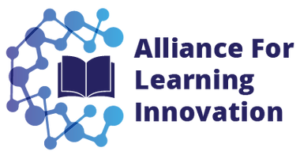ALI Releases Statement on the President’s FY2024

WASHINGTON, D.C. — The Alliance for Learning Innovation (ALI) applauds the increases proposed for education research and development (R&D) and innovation in the President’s budget request. These include the $870.9 million proposed for the Institute of Education Sciences (IES), including $75 million for a National Center for Advanced Development in Education (NCADE), the $405 million proposed for the Education Innovation and Research (EIR) program and the $1.4 billion for the National Science Foundation’s (NSF) Directorate for STEM Education. These investments represent real commitments to advancing an inclusive education research system that centers students, teachers, and communities.
These recommendations build upon the bipartisan interest in utilizing education R&D to accelerate learning recovery, increase student achievement, and ensure students and teachers are prepared for the continued impact technology will have on teaching and learning. National and economic security depends on the success of our students and ALI appreciates the priorities this budget request places on fostering innovations in education that will support U.S. competitiveness.
Dan Correa, CEO of the Federation of American Scientists and co-lead of ALI notes, “Investments in education research and development hold so much promise for dramatically improving gaps in student achievement. Learning recovery, workforce development, and global competition all demand a pool of talent that can only come from an education system that meets the needs of diverse learners. The President’s budget request recognizes that more robust education R&D is needed to support bold innovations that meet the needs of students, teachers, families, and communities.”
This budget will allow IES and other federal agencies the ability to build on boundary-pushing efforts like the National AI Institute for Exceptional Education, which is supporting advancements in AI, human-AI interaction, and learning science to improve educational outcomes for children with speech and language related challenges.
For too long, federal support for education R&D has languished while resources and attention have been devoted to R&D in health care, defense, energy, and other fields. Today’s budget represents a critical step forward in addressing this deficiency. The Alliance for Learning Innovation looks forward to championing the continued development of an education R&D ecosystem that will lead to the types of groundbreaking developments and advancements we see in health care and defense; thus affording students everywhere access to fulfilling futures.
For more information about the Alliance for Learning Innovation, please visit https://www.alicoalition.org/.